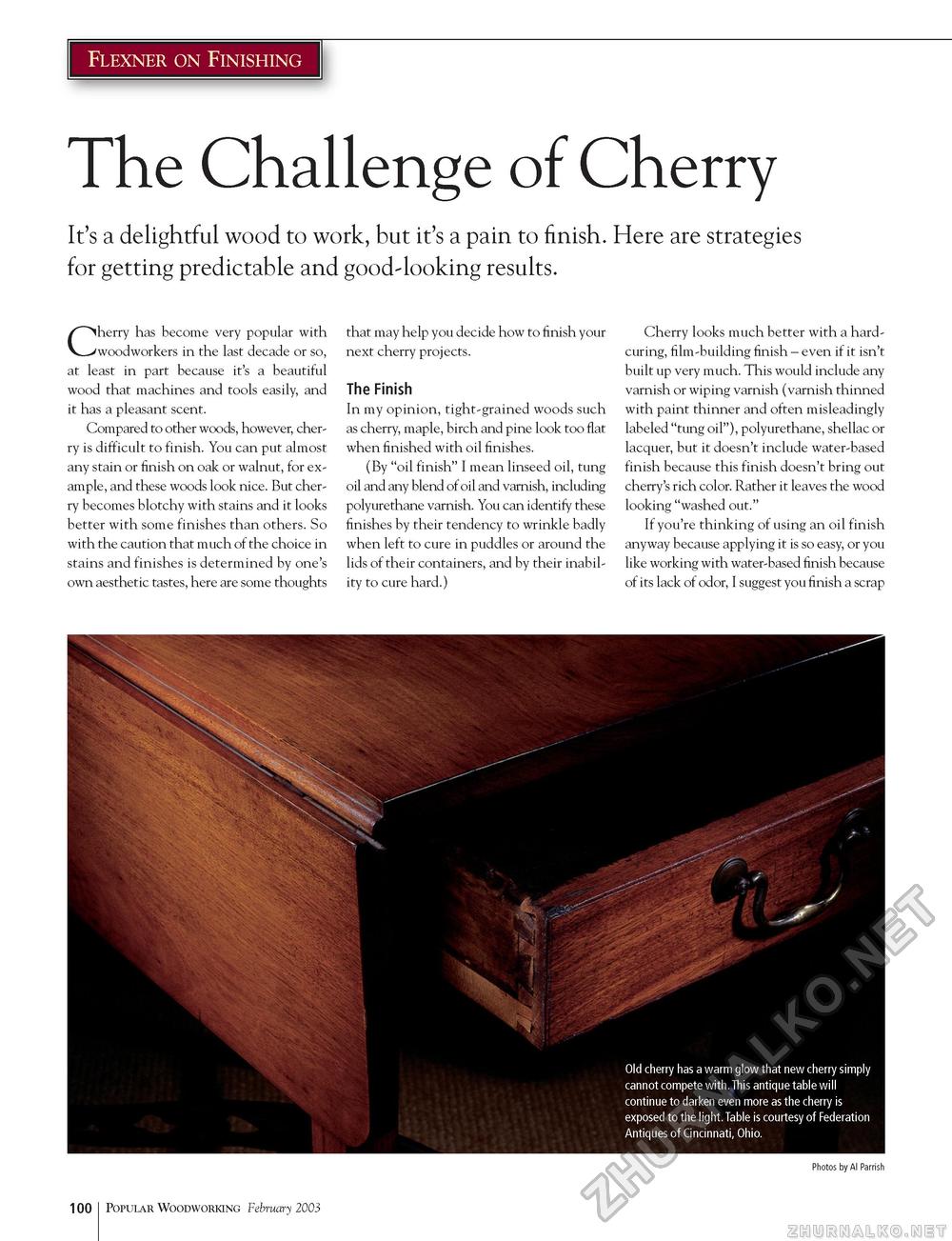Popular Woodworking 2003-02 № 132, страница 100
Flexner on Finishing The Challenge of Cherry It's a delightful wood to work, but it's a pain to finish. Here are strategies for getting predictable and good-looking results. Cherry has become very popular with woodworkers in the last decade or so, at least in part because it's a beautiful wood that machines and tools easily, and it has a pleasant scent. Compared to other woods, however, cherry is difficult to finish. You can put almost any stain or finish on oak or walnut, for example, and these woods look nice. But cherry becomes blotchy with stains and it looks better with some finishes than others. So with the caution that much of the choice in stains and finishes is determined by one's own aesthetic tastes, here are some thoughts that may help you decide how to finish your next cherry projects. The Finish In my opinion, tight-grained woods such as cherry, maple, birch and pine look too flat when finished with oil finishes. (By "oil finish" I mean linseed oil, tung oil and any blend of oil and varnish, including polyurethane varnish. You can identify these finishes by their tendency to wrinkle badly when left to cure in puddles or around the lids of their containers, and by their inability to cure hard.) Cherry looks much better with a hard-curing, film-building finish - even if it isn't built up very much. This would include any varnish or wiping varnish (varnish thinned with paint thinner and often misleadingly labeled "tung oil"), polyurethane, shellac or lacquer, but it doesn't include water-based finish because this finish doesn't bring out cherry's rich color. Rather it leaves the wood looking "washed out." If you're thinking of using an oil finish anyway because applying it is so easy, or you like working with water-based finish because of its lack of odor, I suggest you finish a scrap Photos by Al Parrish 100 Popular Woodworking February 2003 |








